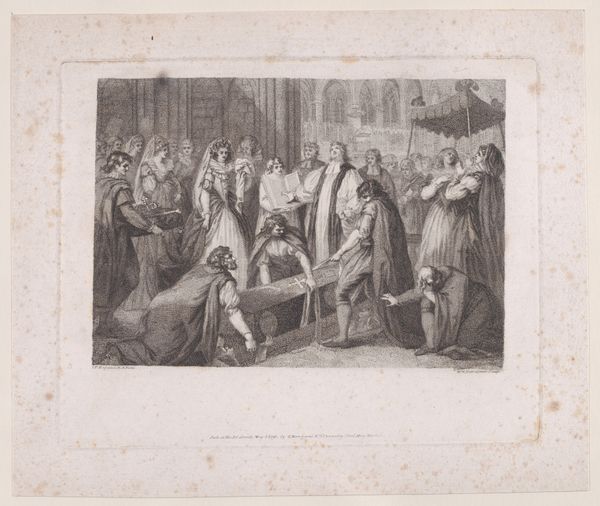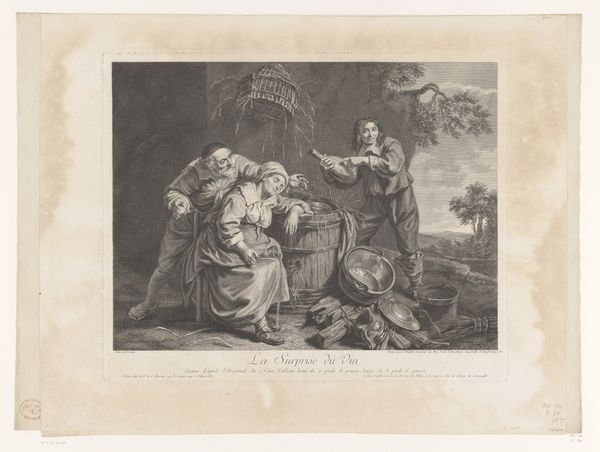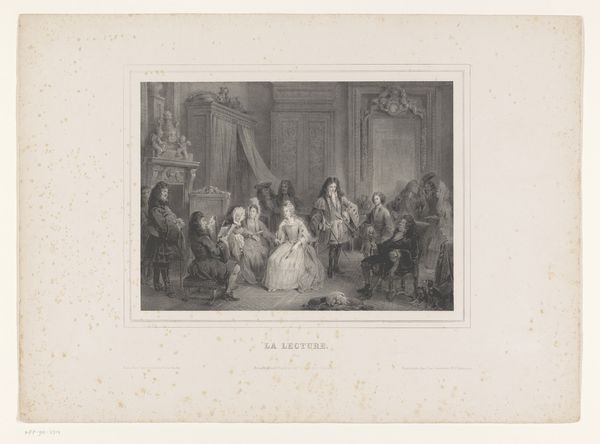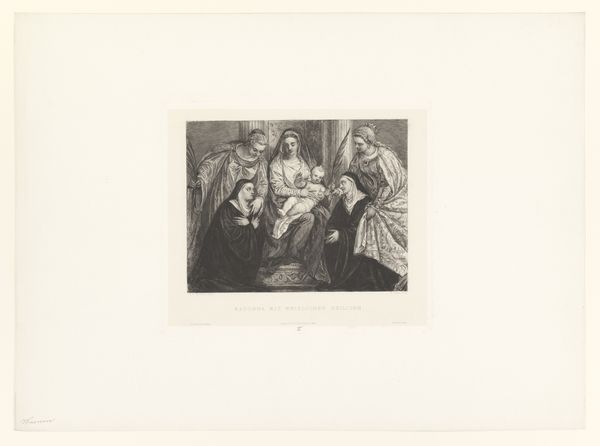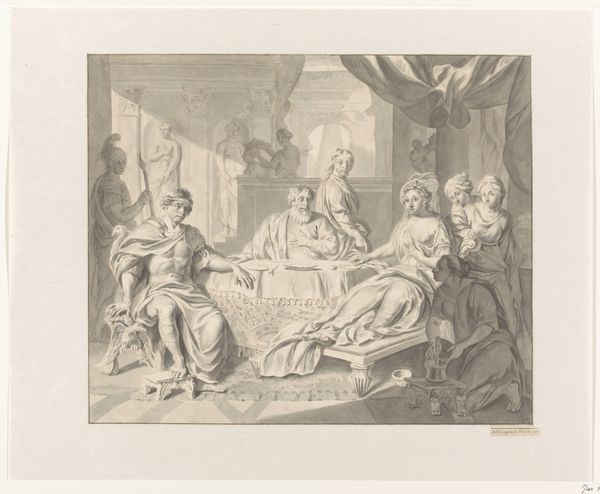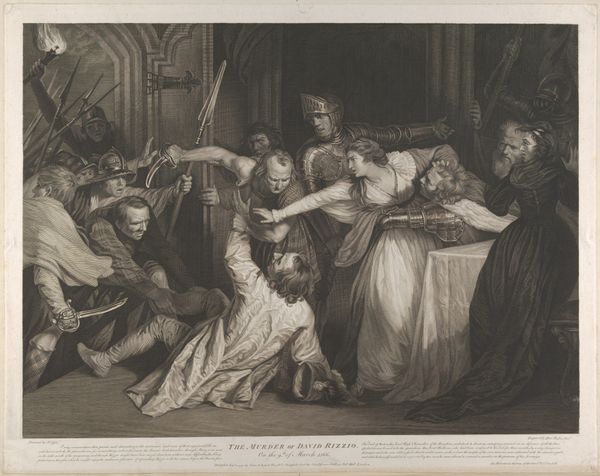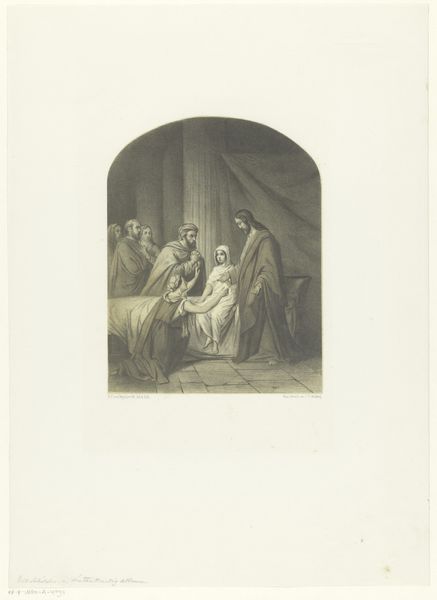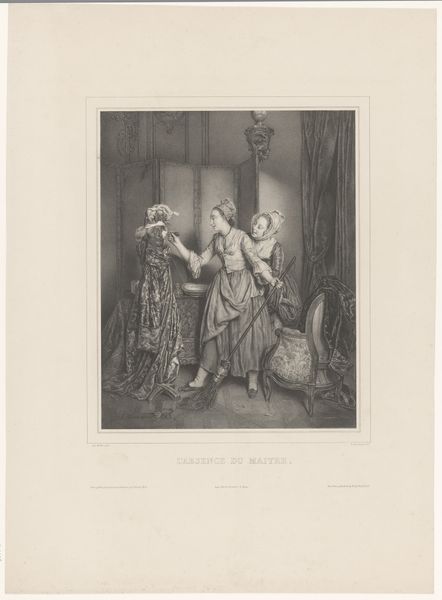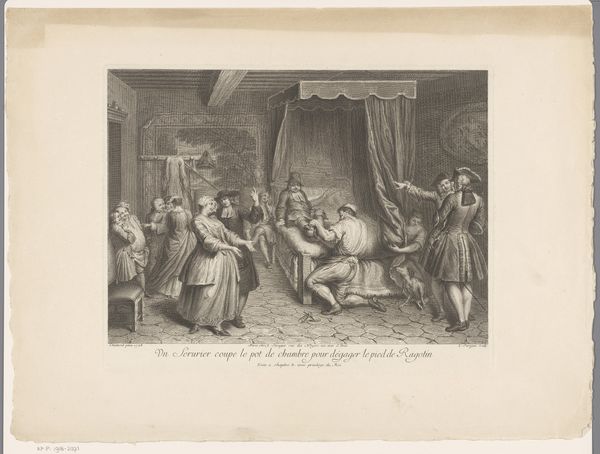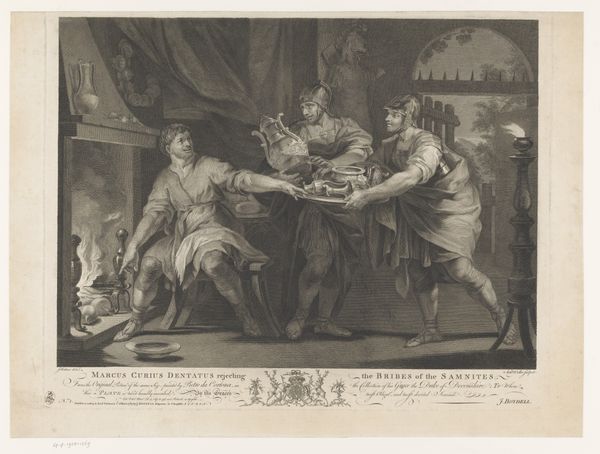
lithograph, print, engraving
#
narrative-art
#
lithograph
# print
#
figuration
#
romanticism
#
genre-painting
#
history-painting
#
engraving
Dimensions: height 291 mm, width 370 mm
Copyright: Rijks Museum: Open Domain
Curator: Let’s discuss “Priester beoordeelt offerdieren,” or "Priest Inspecting Sacrificial Animals", a lithograph by Bernard Romain Julien, dating to around 1842. It's currently held in the Rijksmuseum collection. What's your immediate take? Editor: Bleak opulence! All those dead creatures piled up… it has this eerie beauty, like a really dark fairytale illustration. There's an almost performative quality to it, as though death is simply being ritualized. Curator: Yes, the composition emphasizes precisely that. The scene's vertical axis, anchored by the standing priest and echoed by the hunter on the right, visually asserts dominance over the horizontal arrangement of slain animals, which form the foundation. The animals function as a visual ground—both literally and figuratively. Note also how Julien uses the stark contrast between light and shadow to highlight key figures, giving them prominence. Editor: That interplay is fascinating—I keep returning to the poor animals in the foreground; this almost unsettling intimacy... the contrast between their stillness and the activity around them is incredibly compelling. Do you think Julien was trying to convey a message about the relationship between humans and the natural world? Or perhaps this piece just follows the aesthetic of Romanticism with that theatrical grandeur. Curator: Precisely! As we know, the Romantic artists explored powerful human emotions. In terms of visual rhetoric, observe the gaze of the priest—he's assessing not just the animals but, implicitly, the offering and, thus, the devotion of those who brought it. The artist positions us, the viewers, to interpret that transaction, its inherent power dynamics. Editor: I see, a transaction in emotional currency! It almost feels voyeuristic. Knowing the image dates to about 1842 is really important; understanding how social commentary or political statements weave in during that era definitely helps decoding this visual story. Curator: Yes, understanding how a print such as this functions as a historical document allows for the unveiling of layered meanings. Ultimately, “Priester beoordeelt offerdieren" compels us to consider art's capacity to document, question, and immortalize the practices of a bygone era. Editor: Exactly! A powerful testament. It truly embodies an emotional transaction solidified in pigment. Thank you for shedding some light.
Comments
No comments
Be the first to comment and join the conversation on the ultimate creative platform.

